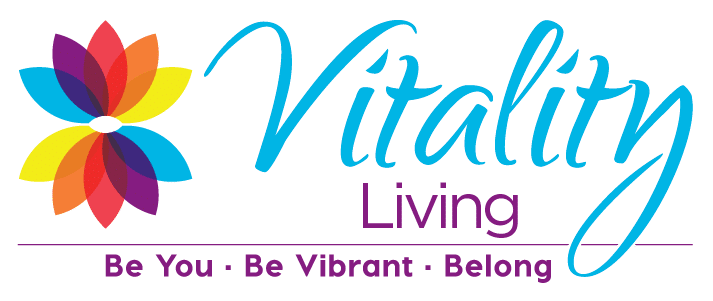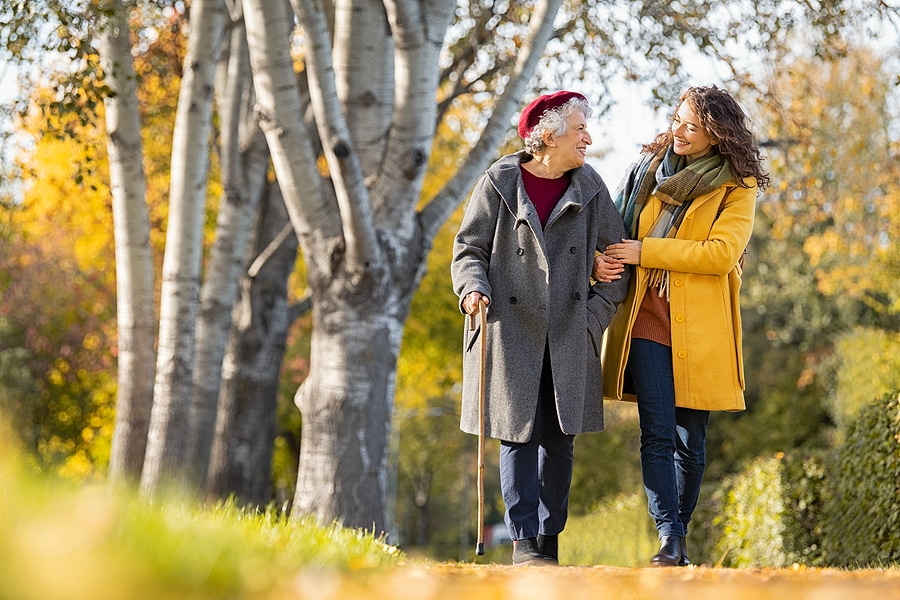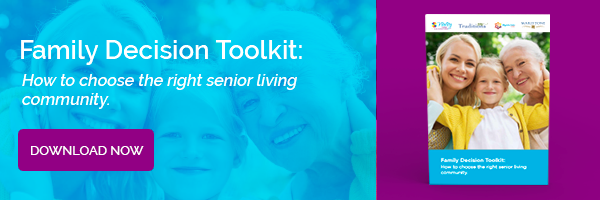When comparing different types of senior living communities, it’s easy to feel overwhelmed and unsure of where to start. That’s why we’ve designed this guide to simplify the process by outlining what to look for, key questions to ask, and how to move forward with confidence when finding the best option for you or your loved one.
Understand the Types of Senior Living Communities
Not all senior living communities are the same. Before you begin your search, it helps to understand the variety of senior care options available and identify which option best fits you or your loved one’s needs.
Independent Living: Perfect for seniors who remain independent but want freedom from the responsibilities of home maintenance. It also provides opportunities to enjoy a more social lifestyle, along with access to cultural and wellness programs.
Assisted Living: Ideal for those who want to maintain their independence while receiving support and assistance with activities of daily living such as bathing, dressing, or medication management.
Memory Care: A specialized service, offered either as a dedicated community or as a distinct neighborhood within a larger senior living community. These programs provide personalized support, safety, and structure for individuals living with Alzheimer’s or other forms of dementia.
Respite Care: Short-term stays that give caregivers a chance to rest while ensuring their loved one receives professional support. It’s also a great way to experience a senior living community firsthand and see if it feels like the right fit.
By identifying which type of senior care options best fit your needs, you can begin exploring the types of senior living communities that may be the best match and feel more prepared to narrow down your options. This is also the perfect time to clarify your wants versus your needs. What are your non-negotiables? Location, price, amenities? Creating a clear list and discussing it with your loved one is an important step in the process.
Consider Senior Living Expenses and Cost of Care
Finances are an important part of the decision-making process in how to choose a senior living community. Understanding the cost of senior living upfront can help you avoid surprises later. Some good questions to ask when comparing senior living communities are:
- What does the monthly fee cover? (Meals, housekeeping, transportation, utilities, etc.)
- Are there additional costs for higher levels of care?
- What payment options are available?
Clarity on the cost of senior living ensures you choose a community that’s both comfortable and financially sustainable for you.
Schedule a visit
Before scheduling a visit, take time to do some initial research online or gather word-of-mouth recommendations. A community’s website is a great place to start, helping you see if they offer the services and amenities you or your loved one are looking for. Even a quick phone call can provide valuable insight and give you a sense of the community’s warmth and connection.
Visiting in person is one of the most important steps in the decision-making process. During a senior living tour, pay attention to the community’s atmosphere, cleanliness, and whether residents appear engaged and happy. It’s also the perfect opportunity to ask questions directly and get a true feel for daily life there. Bring along a list of questions to ask when touring senior living communities, such as:
- What activities and programs are available?
- How is care personalized for each resident?
- What safety measures and emergency systems are in place?
- How are meals prepared, and are dietary needs accommodated?
Asking the right questions during your tour can help you uncover what daily life in the community truly feels like.
Trust Your Instincts
Beyond amenities and levels of care, choosing the right senior living community often comes down to how it makes you feel. Do you feel welcome? Does the community foster connection and joy? A positive first impression can be just as meaningful as the practical details. Trust your instincts. While any space can become a home, it’s important to ask yourself if the atmosphere truly feels like one where you could thrive.
If you’re still unsure, consider visiting again at a different time of day to get a fuller sense of the community. Don’t hesitate to call with additional questions; team members are there to guide you through with any concerns you may have.
Explore Senior Living with Vitality
At Vitality Living, we’re here to help you make the right decision with confidence. From independent living to memory care, our communities across the southeastern United States are designed to support older adults at every stage.
For a more detailed checklist and additional helpful insights on how to choose a senior living community, download our full resource here: Guide to Choosing the Right Senior Living Community.
Ready to find the right fit? Contact us today to schedule your senior living tour and see firsthand what a vibrant life at Vitality Living can look like.



